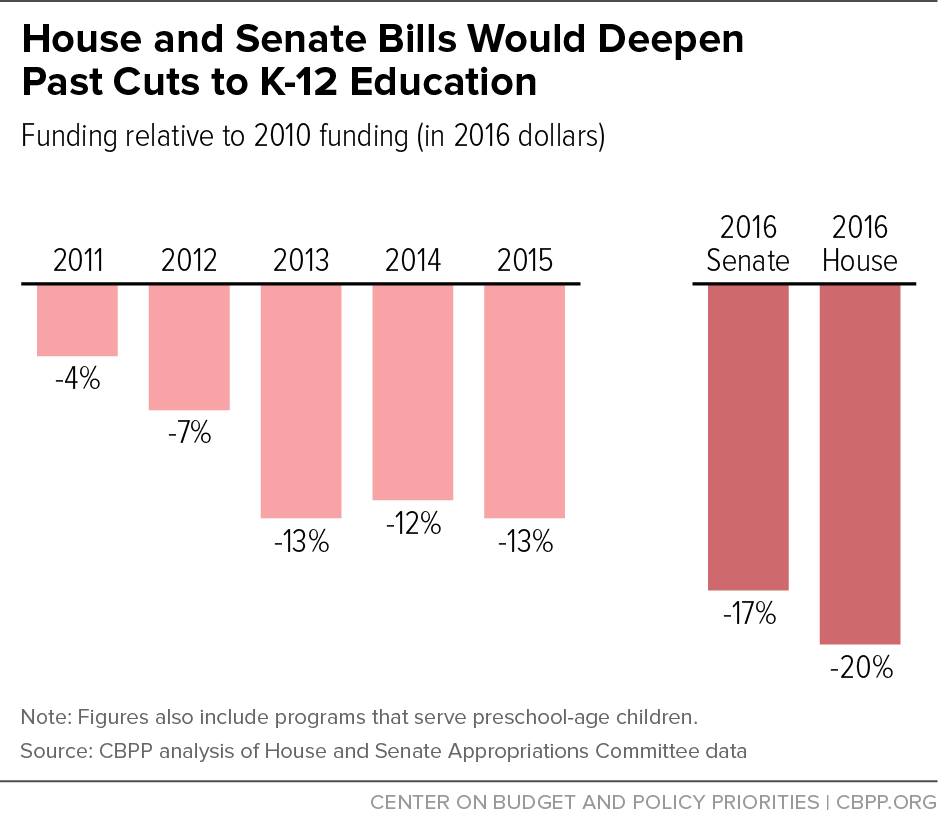BEYOND THE NUMBERS
Federal funding for preschool and K-12 programs, many of them for low- and moderate-income students, has shrunk by 13 percent since 2010 after adjusting for inflation, and new cuts approved by the House and Senate Appropriations Committees for 2016 would bring the total reduction since 2010 to 20 percent and 17 percent, respectively (see chart).
The squeeze on these programs is largely due to the 2011 Budget Control Act’s tight funding caps, as reduced further by sequestration. Preventing the proposed cuts and instead boosting education funding should be a high priority in this fall’s budget negotiations.
The House bill cuts preschool and K-12 education $2 billion below the current level, largely by eliminating about two dozen programs, including:
- Preschool Development Grants to build or expand high-quality preschool programs in high-need communities;
- School Improvement Grants to boost student achievement in low-performing schools;
- Math-Science Partnerships, which funds professional development for elementary and high school math and science teachers; and
- Safe Schools, which funds projects to reduce violence and improve schools’ learning climate.
The Senate bill cuts preschool and K-12 education by $770 million. While less harsh than the House bill, it still contains unacceptable and damaging cuts on top of those enacted since 2010. Like the House bill, it eliminates Preschool Development Grants, despite strong evidence that early learning is important to school readiness and achievement; it also sharply reduces School Improvement Grants and Safe Schools.
The bills partly reflect the Appropriations Committees’ decision to make labor, health and human services, and education programs a low priority when allocating funding across the range of non-defense programs. But it also reflects congressional Republicans’ decision to stick to the post-sequestration funding level for non-defense appropriations. Maintaining funding at this level will make it virtually impossible to invest adequately in education.
The bills provide modest education increases in a few areas, such as special education. But, given their reduced funding levels for education overall, those increases are only possible because of the damaging cuts to other areas. Similarly, raising education funding while retaining the current tight caps would necessitate cuts to other non-defense programs.
Policymakers should reject this misguided approach. Instead, they should replace sequestration with a balanced package of alternate savings, as they did on a bipartisan basis in 2013, and use some of the resulting flexibility to fund education more adequately.

